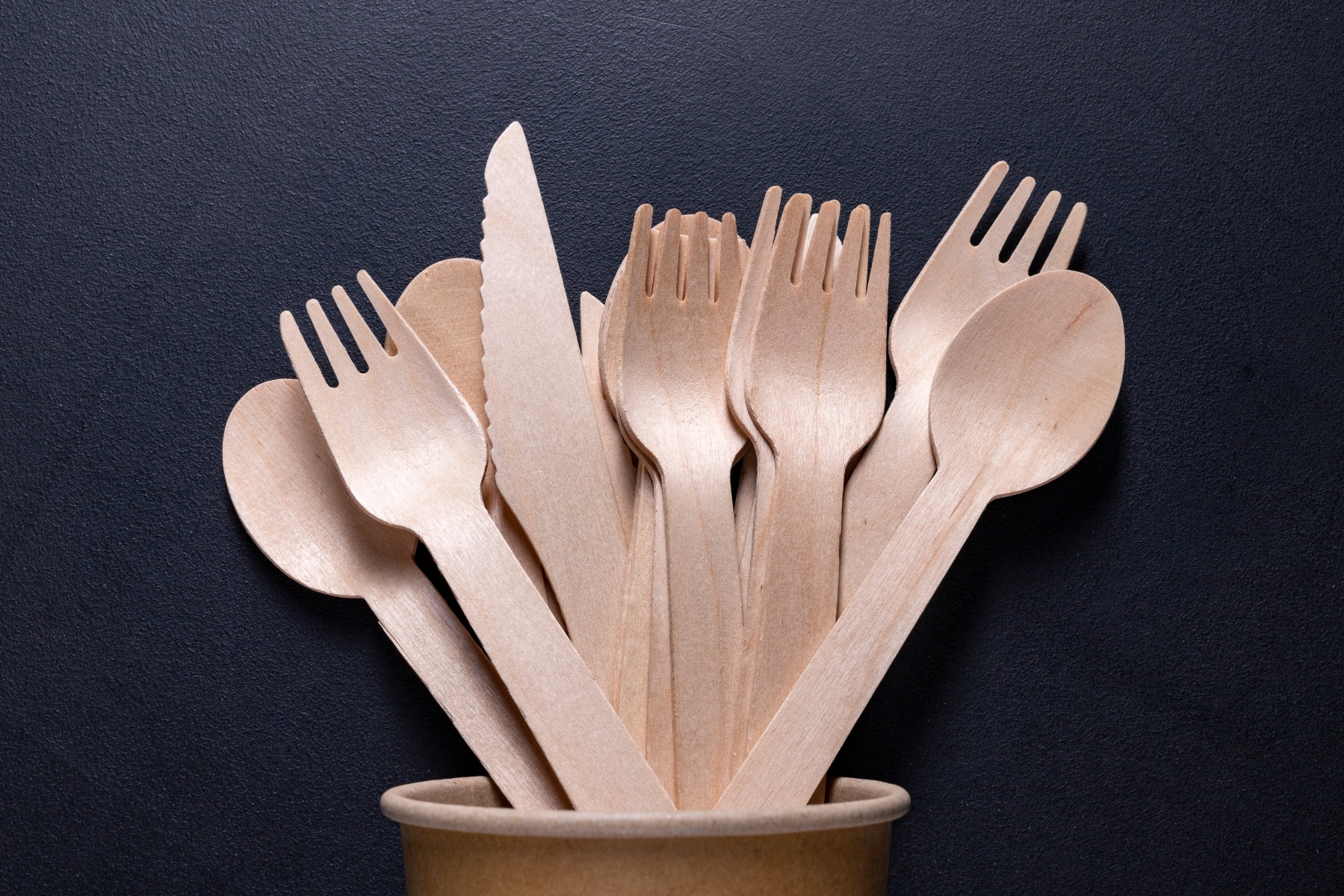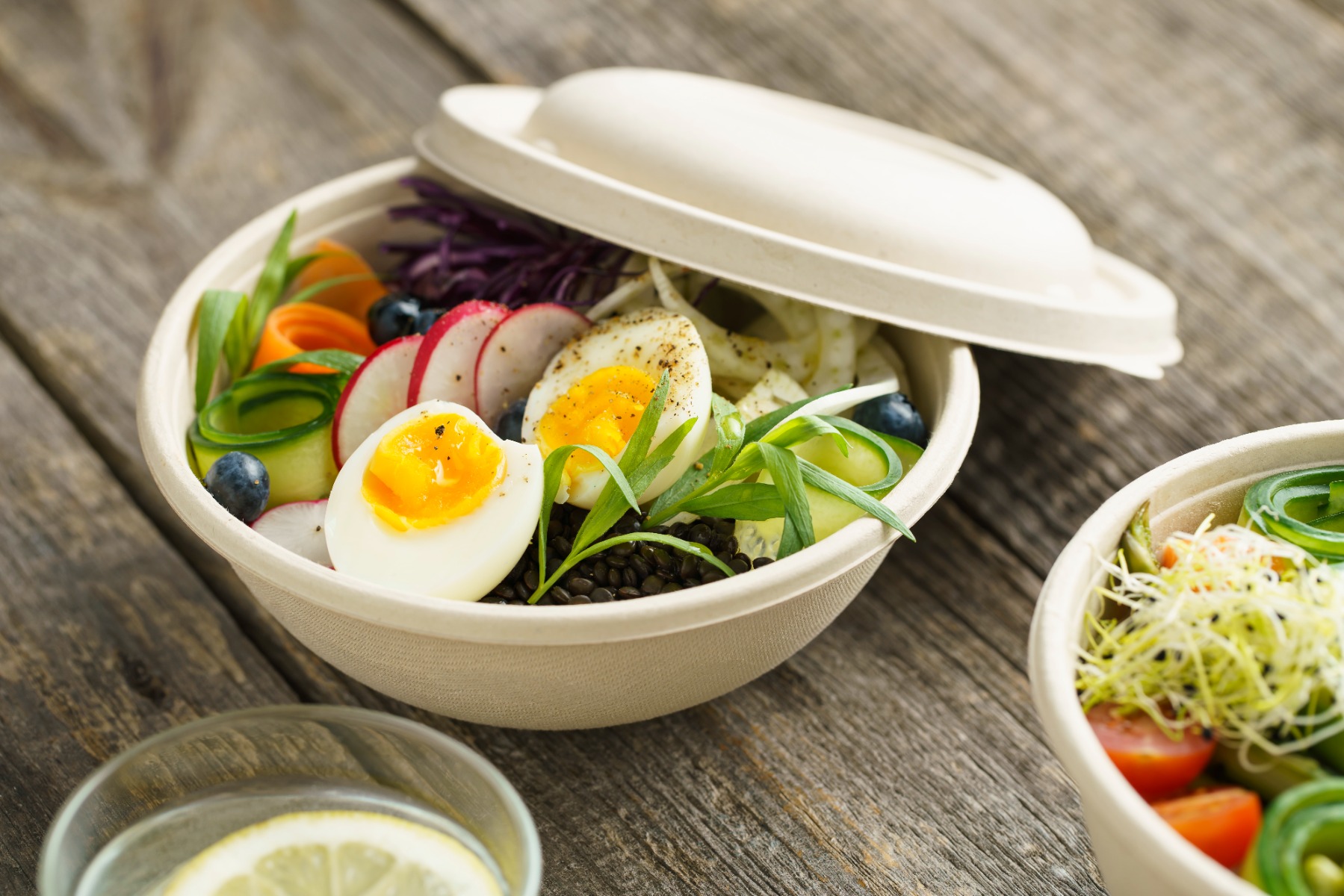In the search for sustainable solutions within the food industry, eco-friendly packaging options are gaining attention. Among these, bagasse, a by-product of the sugar industry, stands out. Why is it catching the eye of businesses looking to green their operations? Let's explore the use of bagasse in the foodservice industry, looking into its versatility and wide range of benefits as a packaging material.
What is Bagasse?
Bagasse is the fibrous residue left after the extraction of juice from sugarcane or sugar beets.
Sugarcane production generates a significant amount of bagasse, roughly 360-540 million tons annually. Traditionally seen as waste, this material offers a wealth of potential as a renewable resource with its high cellulose content. Using sugarcane bagasse for packaging and other applications can help reduce landfill burden and air pollution from improper disposal.
What is bagasse packaging?
As a packaging material, bagasse is becoming a key player in the move towards more sustainable solutions in handling global waste challenges. Its use helps reduce waste and fosters innovations in sustainable packaging.
Understanding the potential applications of bagasse can inspire businesses to adopt more sustainable practices.
What is Bagasse Used For?
Bagasse has gone from being leftover waste to an essential part of green solutions. Here are its main uses:
- Biodegradable and compostable packaging products: As the world leans away from plastic, bagasse steps up as a biodegradable and compostable alternative. Enviropack has a range of sugarcane bagasse plates, bowls, burger boxes/clamshells, containers, that can be used to serve hot, cold, and oily foods.
- Energy production: The use of bagasse as a biofuel for generating heat and electricity underscores its role in renewable energy solutions.
- Paper, paperboard, and pulp manufacturing: Its high cellulose content makes bagasse a valuable raw material for producing eco-friendly food-to-go packaging, helping reduce the need for paper/paperboard.
- Agricultural applications: Used as mulch, soil conditioner, and in compost, bagasse contributes to healthier soils and sustainable farming practices.
14 Advantages and Benefits of Bagasse as Food Packaging
Bagasse packaging offers a range of impressive features that benefit both the planet and businesses. Here are 15 key advantages that make bagasse an outstanding choice for sustainable packaging:
1. Bagasse is a renewable resource
Bagasse is derived from sugarcane, a crop that can be replanted annually, making it a perpetually renewable resource. The cycle of growth, harvest, and replanting ensures a continuous supply without depleting natural resources. This makes bagasse a great example of sustainability in the packaging industry.
2. Bagasse is biodegradable and compostable
Unlike plastics, which linger in our environment for centuries, bagasse products naturally decompose and can be composted. They reintegrate with the earth without leaving harmful residues, turning into nutrient-rich soil. This process significantly reduces waste accumulation and environmental pollution, offering a packaging solution that positively impacts our planet's health.
3. Bagasse use helps reduce pollution
By replacing synthetic materials with bagasse, businesses can contribute to a cleaner environment, with less pollution in our air and water. This shift is crucial for maintaining the health of our ecosystems and communities. It shows how sustainable practices can lead to broader environmental benefits.
4. Bagasse products release less CO2
The production and decomposition of bagasse products release considerably less CO2 than plastics and Styrofoam. This lower carbon footprint is vital in the fight against climate change. As such, bagasse is an attractive option for businesses that want to reduce their environmental impact and help with worldwide sustainability.
5. Bagasse is a sustainable alternative to plastic
Bagasse is a sustainable substitute for plastics and Styrofoam, directly addressing the urgent need to reduce plastic pollution. With its biodegradable and compostable qualities, bagasse offers a sustainable packaging solution that doesn't sacrifice functionality for eco-friendliness. This makes it an ideal choice for businesses looking to make a positive environmental change without compromising quality or convenience.
6. Bagasse requires less energy to produce
The processing of bagasse into packaging is notably more energy-efficient than manufacturing traditional materials like plastic or Styrofoam. This efficiency reduces the overall energy demand and associated emissions from production processes.
7. Bagasse can be recycled
While primarily touted for being biodegradable, bagasse can also be recycled, adding another layer to its eco-friendly nature and extending its life cycle which helps in reducing waste.
8. Bagasse is strong and durable
Its strength and durability make bagasse packaging suitable for a wide range of food types. Whether it's steaming hot meals or chilled desserts, bagasse stands up to the challenge. This durability ensures that food is kept secure. In turn, the use of bagasse packaging also enhances the overall consumer experience by reliably protecting the contents within it.
9. Bagasse naturally possesses insulating properties
Thanks to its inherent insulating properties, bagasse packaging can keep food hot or cold for extended periods. Whether keeping a coffee hot or a salad cool, bagasse packaging works effectively to preserve the quality and freshness of food. Hence, it's an excellent choice for takeaways, deliveries, and outdoor events.
10. Bagasse is microwave-friendly
Bagasse containers offer a safe option for reheating food. Unlike some plastics, bagasse products can be safely used in microwaves as they don't release harmful chemicals when heated. This microwave-friendly feature adds a layer of convenience for consumers, who can enjoy their meals without the hassle of transferring food to microwave-safe dishes.
11. Bagasse withstands low temperatures
Bagasse packaging can handle cold temperatures, staying solid and useful in the fridge. This is important for keeping food safe and of good quality, letting businesses store, and people chill food without worrying about the packaging damaging the food inside.
12. Bagasse is water- and oil- resistant
Bagasse packaging boasts excellent water and oil resistance, making it an ideal choice for various food items. Bagasse containers can effectively hold everything from juicy fruits to oily snacks without compromising food quality or packaging integrity.
13. Bagasse features excellent heat and thermal resistance
Depending on their intended use, bagasse containers can hold hot food up to 95 or 120 degrees Celsius. The bagasse material's thermal resistance ensures that bagasse products can maintain their structure and function when exposed to the heat of hot foods or microwaves.
14. Bagasse is cost-effective
Though bagasse food packaging might have a higher upfront cost than traditional plastic, its durability and versatility can lead to long-term cost savings. This is because it can be used across various food applications, reducing the need for diverse packaging options and minimising business expenses.
Bagasse Packaging for Foodservice
Bagasse presents a practical and eco-friendly packaging solution, meeting the dynamic needs of foodservice industries such as restaurants, cafes, food outlets, dark kitchens, food halls, food courts, street food vendors and catering businesses. Using bagasse as a guilt-free alternative to traditional packaging materials reflects environmental responsibility.
Durable and heat-resistant, bagasse can handle various food types and temperatures, offering versatility across different service scenarios. As such, bagasse works great for outdoor events like food festivals. Its insulating properties and water and oil resistance make it an ideal solution for conveniently serving different types of food. With limited prep space in outdoor catering environments, solutions that minimise the need for multiple food packaging products are essential. Bagasse's multi-functional use reduces the need for varied packaging, simplifying operations and enhancing overall service efficiency.
Ultimately, bagasse offers cost-effectiveness, making it an excellent choice for foodservice businesses aiming to improve efficiency and support sustainability.
How Long Does Bagasse Take to Decompose?
A key aspect of bagasse's environmental appeal is its biodegradability. Unlike traditional plastic, which can linger in the environment for hundreds of years, bagasse products break down much faster, typically decomposing within 30 to 90 days under favourable conditions. This rapid decomposition rate is instrumental in reducing landfill waste and contributing to a more sustainable cycle of use and renewal.
However, the decomposition rate of bagasse can vary based on several factors, including temperature, moisture levels, and microbial activity. Warmer temperatures and higher moisture levels generally accelerate decomposition by creating ideal conditions for the microbes responsible for breaking down organic materials.
Understanding these factors is crucial for businesses and consumers alike to fully appreciate the environmental impact of their packaging choices and the role that environmental conditions play in the biodegradability of bagasse packaging.
Conclusion
Bagasse is an excellent example of how industry by-products can be repurposed into eco-friendly solutions. Its sustainability and versatility make it a valuable alternative food packaging material, reducing reliance on non-renewables and fostering a circular economy.
Enviropack offers a collection of eco-friendly bagasse containers, including sturdy, cut-resistant, and microwave-safe boxes, containers, and sugarcane bagasse bowls. These products are designed for various food types and come in multiple sizes to cater to different needs. They are available in white and kraft colours. Visit our store for more information on our bagasse containers.
 Partners
Partners 
 +44 (0)20 8428 9184
+44 (0)20 8428 9184
 +44 (0)20 8428 9184
+44 (0)20 8428 9184 Partners
Partners 




